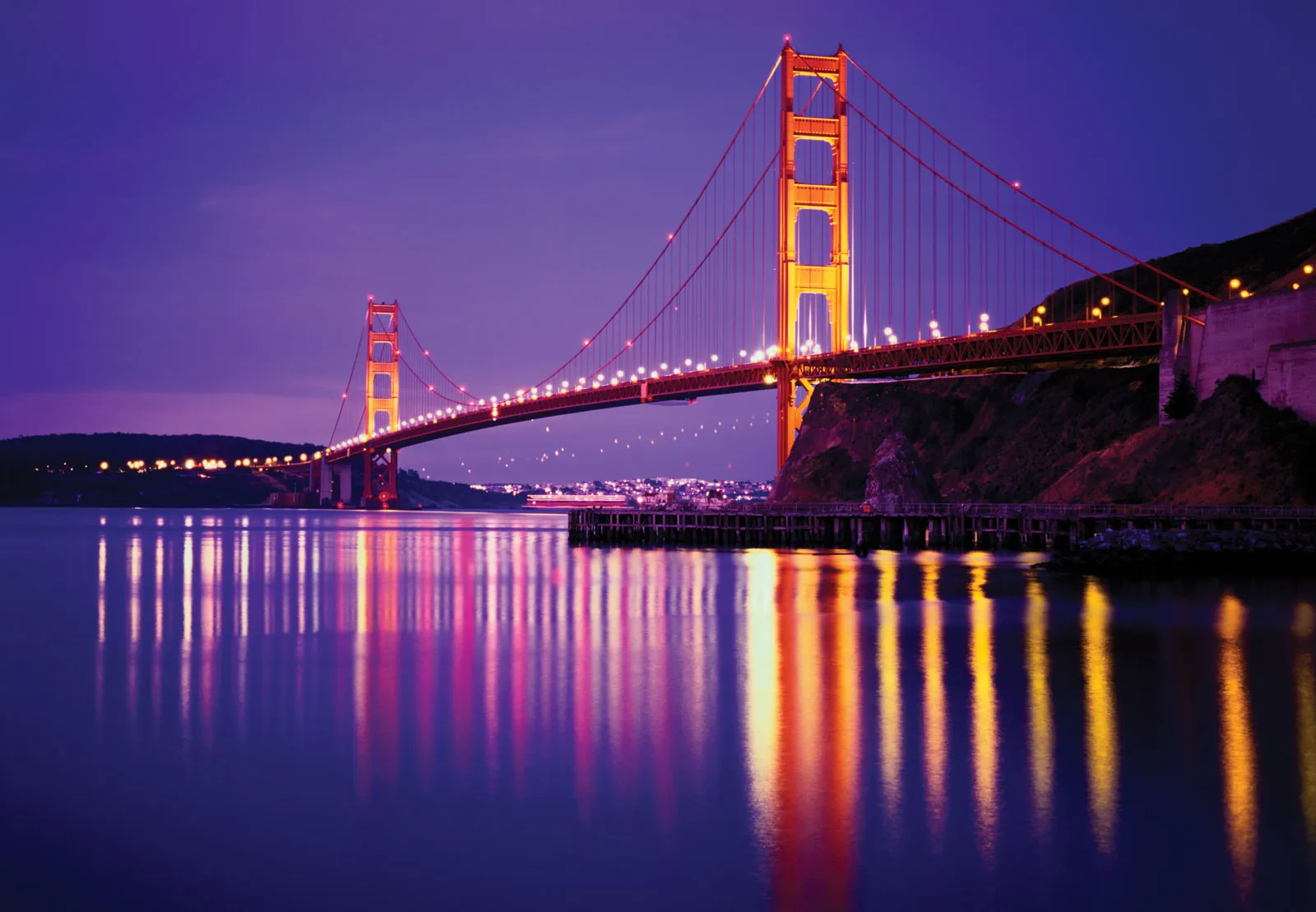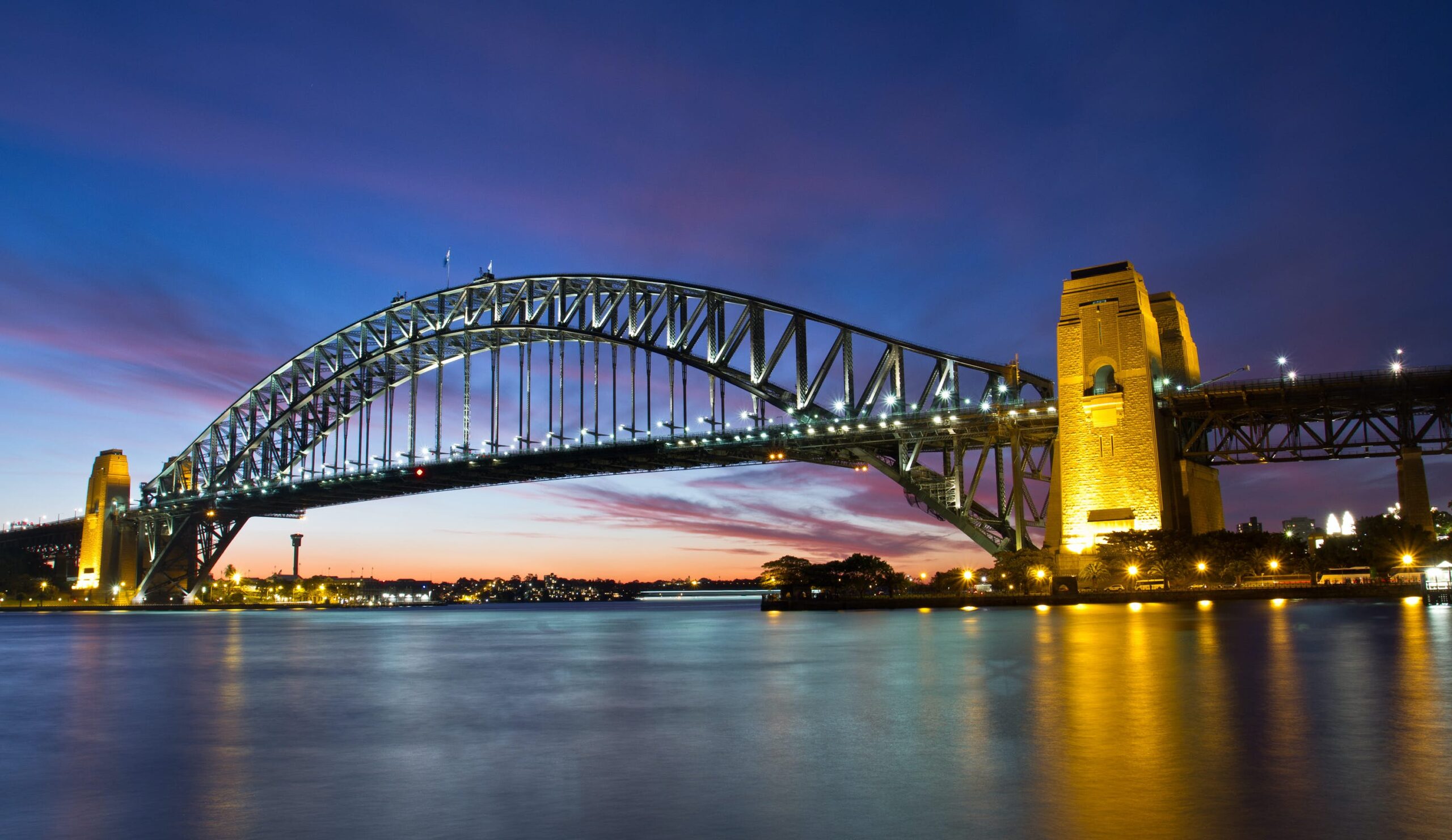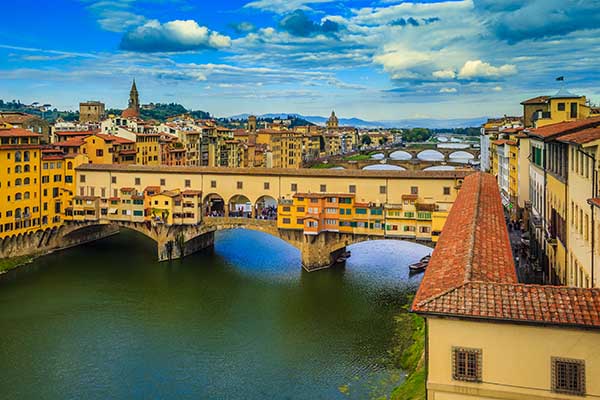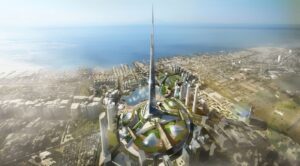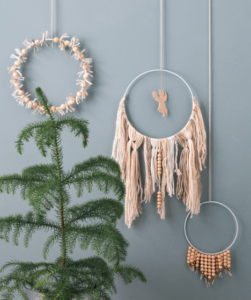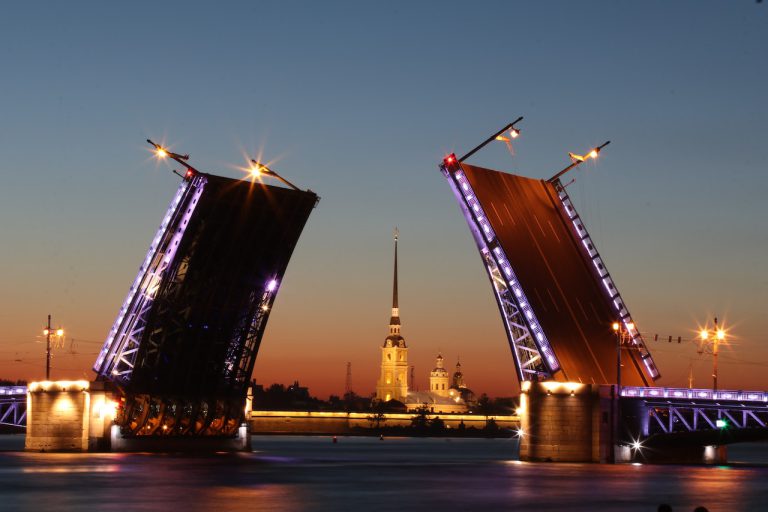
Table of Contents
What are the Different kinds of Bridges?
Getting to the other side — that has been the problem for men whenever they have been faced by a river or valley — and they have arrived at many different kinds of solutions.
The Emperor of Rome stood with his Consuls looking over the River Tiber. In the distance, approaching the far bank, they could see the enemy; their horses, flags and armour bright in the sunshine. Only one thing could stop this huge army entering and destroying the city — the wooden Sublician Bridge over the Tiber must be cut down. But that would take time. How could they delay the enemy?
Suddenly, Horatius Cocles and two other soldiers stepped forward. They offered to fight the enemy’s champions to hold up the advance. Crossing to the other side of the bridge, they called out their challenge and began to fight while, unknown to the enemy, powerful arms swung heavy axes into the timbers supporting the bridge. Before long they began to crack and tumble into the deep waters of the Tiber.
Horatius’s two companions fled back to safety but Horatius, still fighting, was left stranded, a gaping wound in his leg. Finally, the bridge gone, he too turned and plunged into the Tiber, swimming painfully to the safety of the other shore. Rome was saved.
In peace and war, bridges have always been important. When Man’s remote ancestors wandered the forests and plains looking for food and shelter millions of years ago they might have come across a river that was uncrossable without some form of bridge. If they were lucky a fallen tree might have helped them. If not they needed to work out for themselves how to place trees to get them across.
Today at Beddgelert in North Wales a tree trunk bridge is still in use. The bridge-building technique was similar to that used by people in Neolithic times.
The same principle is used in the girder bridge — one of the three main kinds of bridge developed over the centuries to cross rivers, gorges and roads. Originally built of timber but nowadays of steel or concrete, the girder bridge consists of one or a number of horizontal structures or spans resting on foundations called ‘abutments’ at each end. Any load on the girder acts straight down on these foundations which must be solidly laid. When iron began to be used for building in the 19th century the great British engineers Stephenson and Fairbairn designed the Brittania Tubular Bridge across the Menai Straits to join Anglesey to the Welsh mainland. This allowed trains to run through two huge wrought iron tubes over four spans, two of 70 metres and two of 140 metres, and it set a pattern for thousands of similar girder bridges all over the world.
Cantilever bridge
A simple cantilever bridge consists of two large wooden brackets jutting out into the stream from towers on ether side. The towers are filled with stones and rubble that push down on to the outside ends of the cantilever, thus keeping them rigid enough for a simple beam to rest on and join up the two arms in the middle. In the Forth Bridge the cantilevers supporting the huge 521 metre spans are massive sweeping girders set on stone piers. Each sweep Is really a double bracket supported in the middle by steel tubes four metres in diameter. Little wonder that no sooner have painters finished at one end of the bridge than they have to start all over again at the other!
By the way, it is not always easy to identify a cantilever bridge. London’s Waterloo Bridge, built in 1942, looks like a series of five arches but is in fact made up of continuous cantilever spans, all in reinforced concrete, which is stronger than steel.
Arches
Some of the very oldest bridges are built not with girders but with arches. The Romans in particular were very fond of this form of construction and some of their bridges, such as the Alcantara Bridge in Spain, are still standing after 2000 years. Other famous arch bridges include the Old London Bridge (demolished in 1831), on which were shops and houses, and the incomplete bridge at Avignon which inspired the folk song ‘Sur le pont d’ Avignon’ known by every schoolchild in France.
Stone or concrete arch bridges, although they cannot be built with such wide spans as cantilevers, are immensely strong. The first to be built were ‘corbelled’ — constructed by laying stones so that each layer sticks out a little more than the layer below it until they finally meet at the top. Then this was improved on by forming a true arch from a semi-circle of stones, the middle one right at the top of the arch being wedge shaped. It was so important to get the shape of this stone correct that builders rightly called it the ‘keystone’. Larger spans are possible using specially strengthened steel to form arches, one of the most spectacular examples of this type being the bridge over Sydney Harbour in Australia.
Some of the world’s most beautiful and breathtaking bridges are suspension bridges. The famous Golden Gate Bridge at San Francisco, though not the longest despite its 1280 metre span, is perhaps the best known. Suspension bridges are so called because they literally hang from cables suspended between the anchorages at each end. But these cables are very special. They are not just slung across the river from one bank to another but ‘spun’ into place. Each cable consists of thousands of single steel wires carried over the span and spun round as they are being carried. The end result is a series of cables of immense strength.
Brunel
The suspension system is used for spanning some very special river valleys. When the famous bridge builder Isambard Kingdom Brunel (1806-59) see this post, was faced with the task of joining the two banks of the River Avon at Clifton just outside Bristol, he could not use a girder construction because the piers would be too high nor could he turn to an arch because the span was too great for techniques at that time. So he used suspension, hanging the road from vertical chains.
Bridges must be strong, firm and not too heavy, to avoid collapsing under the weight of traffic or their own weight. But they don’t have to be completely fixed. One of the best-known bridges in the world is Tower Bridge in London, an example of the bascule bridge, designed so that its arms, which are on pivots and counterweighted, can be lifted up to allow taller boats to pass underneath. There are swing bridges where the arms are pivoted so that they swing horizontally. Then, there are vertical lift bridges in which the whole centre span section can be raised up vertically in one piece. Moveable bridges are quite numerous so look out for one.
In the Second World War the Bailey bridge came into its own because it was a type of bridge that could be assembled, taken down and driven away in a lorry very quickly. Perhaps a long way from Horatius… but then again, perhaps not so very different after all.
Why the ‘Keystone’ Stone Arch does not fall?

Stone arch bridges are over 2,000 years old. The Etruscans, Romans and Goths all built bridges on this principle. They consisted of a number of blocks assembled in the form of a curved arch, the two limbs resting at the other ends on hard ground to resist the thrust. They were prevented from falling together at the centre by a wedge called a keystone.
All the Roman arches were semi-circular as in this picture. The central keystone was very accurately wedge-shaped and often elaborately decorated. Some weighed as much as six tonnes. The Goths were not as great engineers as the Romans. Their semi-circular arches collapsed so they devised the wedge-shaped arch. The weight of any load was carried down to the abutments. A later development was the elliptical arched bridge. This spanned a greater distance without rising as high as a semi-circular arch but required greater expertise in design and building.
The Principle of the Suspension Bridge

A suspension bridge is a bridge hanging in mid-air and the basic simplicity behind its design is shown in the diagrams above. In its most primitive form, it consists of nothing more than a rope or creeper slung between two supports (top). But if you have ever tried to swing hand over hand along a rope you will know how tiring it can be!
The obvious improvement was to introduce two more creepers which would provide hand holds. Then the person crossing over could walk along the main rope and keep his balance by holding on to the handrails either side (centre).
A far easier way of crossing a gap like a river would be to use other ropes to hang planks from the main rope to walk across (bottom). And the next step, to allow boats to pass up and down the river, would be to raise the suspension ropes.
Even primitive peoples grasped the ease with which a simple suspension bridge could be built. Today natives in jungles and high mountains still construct these simple but very useful bridges.
In the modern suspension bridge the load pulls inwards along cables anchored to the banks and pushes down through the piers. Swaying in high winds can be a problem; this is overcome partly by stiffening the roadway and to a much greater extent, today, by aerodynamic design.
How the Cantilever Works?


For 600 years the Old London Bridge straddled the River Thames until it was demolished in 1831. Begun in 1176 by King Henry ll, five times it was swept by fire and each time rebuilt. The stone piers supporting the arches were designed to restrict the tidal flow and give a deeper anchorage to ships using the Port of London.
Concrete
A mixture of water with cement, sand and either gravel or stone chips, concrete gives the bridge architect a great freedom of design when it is reinforced.
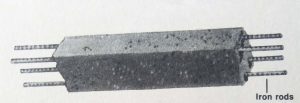
Ordinary reinforced concrete has steel rods or mesh embedded in it. The steelwork is shaped and the concrete poured around it and allowed to set.
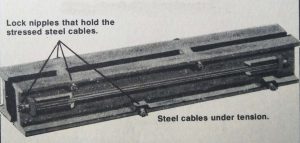
In this beam the steel cables are stretched and the concrete poured on. When tension is released the concrete is compressed and strengthened as the cables try to shorten.
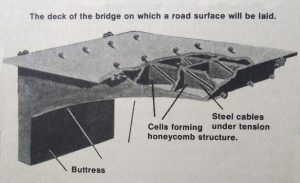
Part of a bridge road deck showing the cellular or ‘honeycomb’ structure together with stressing rods. This gives the deck great strength and durability.
Man’s first bridges consisted of nothing more than tree trunks or large boulders thrown across rivers but the exact date in history is unknown. Arch construction was known to the Sumerians as early as 3200 B.C., and a reference exists to a bridge over the Nile from 2650 B.C. The oldest surviving dateable bridge in the world is the slab stone single arch bridge over the River Meles at Smyrna, Turkey. This dates from around 850 B.C.
In Britain the clapper bridges of Dartmoor date from prehistoric times and there are the remains of 2nd century A.D. Roman bridge in Northumberland.
The world’s widest bridge is the Sydney Harbour Bridge in Australia which is 48m wide, it carries two electric overhead railway tracks, eight lanes of roadway and a cycle and footway.
The Quebec Bridge over the St. Lawrence River in Canada has the longest cantilever span in the world — 987m. Its building took 18 years and cost 87 lives.
The Tay Bridge, opened in June 1878 to carry a railway across the River Tay on the main . Edinburgh-Dundee line was hailed as a master-piece of Victorian engineering. But not for long. In December 1879, a gale swept away 13 spans of the bridge just as the Edinburgh mail train was going across. Of the 78 passengers and crew, not one survived.
A GALAXY OF BRIDGE DESIGNS

1. Stone Arch. The next development after the simple beam bridge. The keystone principle was used to distribute loads evenly. The Romans were masterful builders of this type of bridge — their Alcantara Bridge in Spain has stood for 2,000 years.
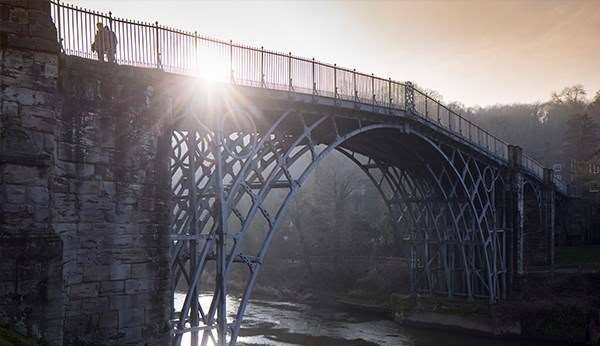
2. Iron Arch. These first appeared in the industrial Revolution — the first being built in 1779. In their eagerness, some engineers used iron where stone would have done just as well!

3. Box Girders. Much used in modern bridge design, box girders are hollow sections that provide strength with minimum weight. Our picture shows a single span cantilever where box girders form the road deck.

4. Cantilever. The most famous example is possibly the Forth Rail Bridge, built in 1890. Cantilevers allow for long spans because other forces compensate for the weight of the unsupported central span.

5. Suspension Bridge. Cables are ‘spun’ between the bridge towers allowing the goad deck to be supported. The Golden Gate Bridge at San Francisco is a marvellous example.
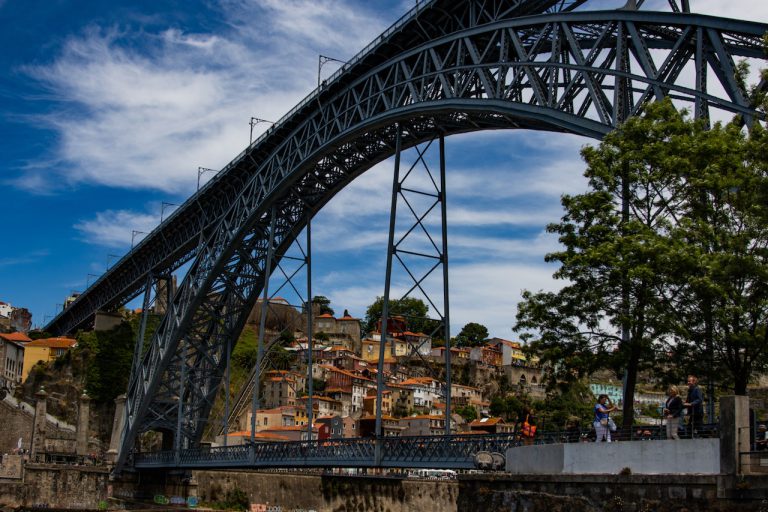
6. Steel Arch. High-tensile steel is used. The road is suspended from the arch. The Sydney Harbour Bridge uses this principle.

7. Bascule Bridge. The arms are pivoted and counterweighted and are swung upwards by winding machinery. Tower Bridge in London has ornate winding towers.
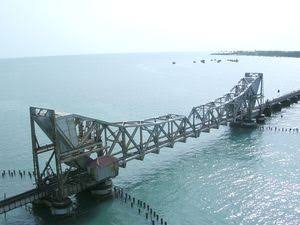
8. Moveable Drawbridge. The whole structure rolls back on special tracks on to one bank of the river.
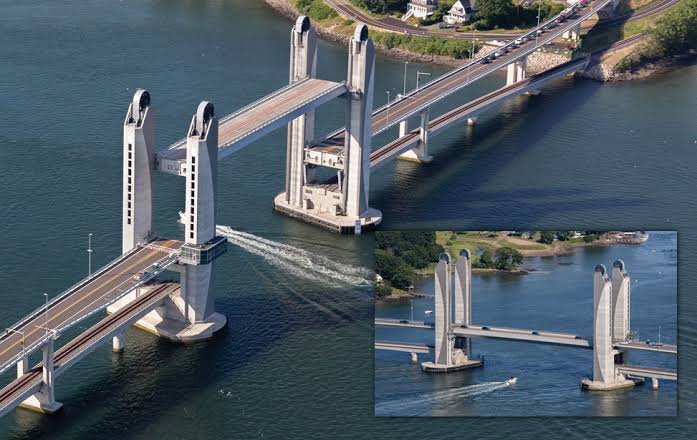
9. Vertical Lift Bridge. This gives a high clearance when there is little space for machinery. Many can be seen at large ports.
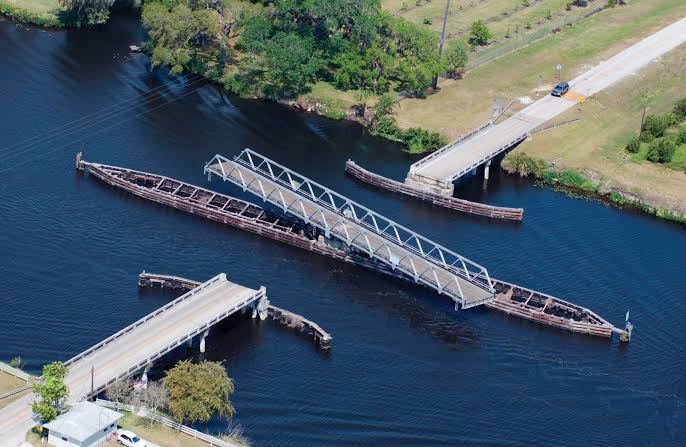
10. Central Swing Bridge. The opening span swings round horizontally, balanced on a pivot. They can give two-way clearance to ships.
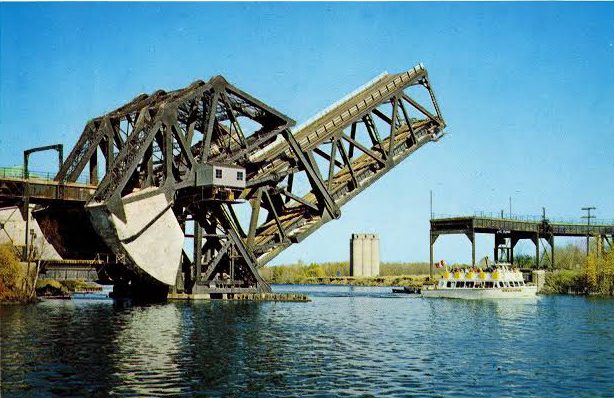
11. Jack-knife Lift Bridges. Simple design for small spans. All the machinery is housed on one shore.
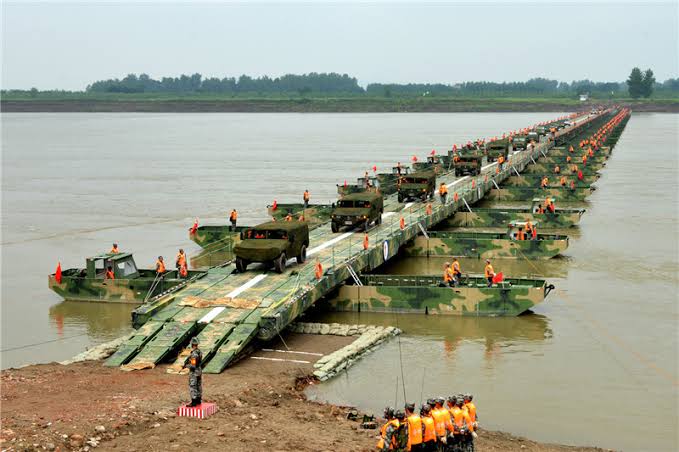
12. Pontoon. An ancient form of moveable bridge. Usually a temporary measure, they are important in times of war when normal routes are cut.
Here are some examples of famous bridges from around the world, along with their unique design features and construction materials:
-
Golden Gate Bridge (San Francisco, USA)CopiedGolden Gate Bridge (San Francisco, USA)
- Design features: This suspension bridge spans the Golden Gate Strait and is known for its vibrant red-orange color. It has two main towers and a single, enormous span connecting them.
- Construction materials: Its main structure is made of steel, while the cables are made of high-strength wires. The bridge was painted with a special orange-red color called "international orange.
- Design features: This suspension bridge spans the Golden Gate Strait and is known for its vibrant red-orange color. It has two main towers and a single, enormous span connecting them.
- Construction materials: Its main structure is made of steel, while the cables are made of high-strength wires. The bridge was painted with a special orange-red color called “international orange.

-
Tower Bridge (London, UK)CopiedTower Bridge (London, UK)
- Design features: This iconic bridge consists of two towers and a movable middle section called a bascule bridge. It was designed to allow tall ships to pass under.
- Construction materials: The framework of the towers and bascules are made of steel, while the exterior decoration is clad in Victorian-style stone, giving it a majestic appearance.
- Design features: This iconic bridge consists of two towers and a movable middle section called a bascule bridge. It was designed to allow tall ships to pass under.
- Construction materials: The framework of the towers and bascules are made of steel, while the exterior decoration is clad in Victorian-style stone, giving it a majestic appearance.

-
Sydney Harbour Bridge (Sydney, Australia)CopiedSydney Harbour Bridge (Sydney, Australia)
- Design features: This steel through-arch bridge features a single, large arch supporting the deck. It carries road and rail traffic, and its summit offers pedestrian access, providing a panoramic view of Sydney.
- Construction materials: The bridge's arch and other steel components were fabricated using high-strength steel, providing strength and durability even under heavy loads.
- Design features: This steel through-arch bridge features a single, large arch supporting the deck. It carries road and rail traffic, and its summit offers pedestrian access, providing a panoramic view of Sydney.
- Construction materials: The bridge’s arch and other steel components were fabricated using high-strength steel, providing strength and durability even under heavy loads.

-
Ponte Vecchio (Florence, Italy)CopiedPonte Vecchio (Florence, Italy)
- Design features: This medieval stone bridge spans the Arno River and is distinguished by a row of shops built on it, providing an interesting market-like experience for pedestrians.
- Construction materials: The bridge's structure is made of stone and masonry, creating a classic and enduring look.
- Design features: This medieval stone bridge spans the Arno River and is distinguished by a row of shops built on it, providing an interesting market-like experience for pedestrians.
- Construction materials: The bridge’s structure is made of stone and masonry, creating a classic and enduring look.

-
Akashi Kaikyo Bridge (Kobe, Japan)CopiedAkashi Kaikyo Bridge (Kobe, Japan)
- Design features: Also known as the Pearl Bridge, this suspension bridge holds multiple world records, including being the longest main span for a suspension bridge.
- Construction materials: The bridge's main tower and cables are made of steel, while the foundations are built on piles secured deep into the seabed to withstand earthquakes and typhoons.
- Design features: Also known as the Pearl Bridge, this suspension bridge holds multiple world records, including being the longest main span for a suspension bridge.
- Construction materials: The bridge’s main tower and cables are made of steel, while the foundations are built on piles secured deep into the seabed to withstand earthquakes and typhoons.

Generally, the choice of bridge design and materials should align with the specific requirements of the site, anticipated loads, environmental conditions, and budget constraints to achieve optimum strength, durability, and lifespan.
There are several different types of bridges that are used in various construction projects. These bridges are designed to support or span physical obstacles such as rivers, valleys, and highways, allowing transportation and movement over these obstacles.
Here, we will discuss some of the most common types of bridges:
Copied
Covered Bridge
A covered bridge is a bridge with a roofed structure that protects the bridge deck from the elements. They were prevalent in the 19th century and were often constructed using wood. Covered bridges usually have a charming and rustic appearance, and many are considered historical landmarks.
Beam Bridge
A covered bridge is a bridge with a roofed structure that protects the bridge deck from the elements. They were prevalent in the 19th century and were often constructed using wood. Covered bridges usually have a charming and rustic appearance, and many are considered historical landmarks.
The simplest and most common type of bridge is the beam bridge, which consists of horizontal beams supported by vertical piers or abutments on either end. These bridges are typically made of concrete, steel, or wood and can handle shorter spans. However, they are limited in length and are not suitable for long distances.
Copied
Covered Bridge
A covered bridge is a bridge with a roofed structure that protects the bridge deck from the elements. They were prevalent in the 19th century and were often constructed using wood. Covered bridges usually have a charming and rustic appearance, and many are considered historical landmarks.
Arch Bridge
A covered bridge is a bridge with a roofed structure that protects the bridge deck from the elements. They were prevalent in the 19th century and were often constructed using wood. Covered bridges usually have a charming and rustic appearance, and many are considered historical landmarks.
An arch bridge is characterized by a curved structure that transfers the load to its abutments at either end. The load is distributed along the arch and then down to the supporting abutments. Arch bridges are renowned for their elegance and strength. They were commonly built with stone or brick in ancient times, but modern arch bridges are made of steel or concrete. Famous examples include the Pont du Gard in France and the Sydney Harbour Bridge in Australia.
Copied
Covered Bridge
A covered bridge is a bridge with a roofed structure that protects the bridge deck from the elements. They were prevalent in the 19th century and were often constructed using wood. Covered bridges usually have a charming and rustic appearance, and many are considered historical landmarks.
Cable-Stayed Bridge
A covered bridge is a bridge with a roofed structure that protects the bridge deck from the elements. They were prevalent in the 19th century and were often constructed using wood. Covered bridges usually have a charming and rustic appearance, and many are considered historical landmarks.
Similar to suspension bridges, cable-stayed bridges feature cables that are attached directly to the deck, forming a fan-like pattern. These cables transfer the load to one or more towers, providing the necessary support. Cable-stayed bridges are visually striking and are often seen in urban areas or in situations where aesthetic appeal is important. The Millau Viaduct in France and the Russky Bridge in Russia are well-known cable-stayed bridges.
Truss Bridge
Copied
Covered Bridge
A covered bridge is a bridge with a roofed structure that protects the bridge deck from the elements. They were prevalent in the 19th century and were often constructed using wood. Covered bridges usually have a charming and rustic appearance, and many are considered historical landmarks.
A covered bridge is a bridge with a roofed structure that protects the bridge deck from the elements. They were prevalent in the 19th century and were often constructed using wood. Covered bridges usually have a charming and rustic appearance, and many are considered historical landmarks.
A truss bridge is a type of bridge made up of triangular-shaped trusses that distribute the load evenly across the structure. These bridges are usually constructed using steel or iron. Truss bridges are ideal for longer spans and are frequently used in railway bridges. The Pratt truss and Warren truss are two common configurations of truss bridges.
Suspension Bridge
Copied
Covered Bridge
A covered bridge is a bridge with a roofed structure that protects the bridge deck from the elements. They were prevalent in the 19th century and were often constructed using wood. Covered bridges usually have a charming and rustic appearance, and many are considered historical landmarks.
A covered bridge is a bridge with a roofed structure that protects the bridge deck from the elements. They were prevalent in the 19th century and were often constructed using wood. Covered bridges usually have a charming and rustic appearance, and many are considered historical landmarks.
Suspension bridges are known for their impressive spans and iconic cable systems. These bridges are constructed by suspending the deck with massive cables attached to towers or piers. The cables hang in a catenary curve, providing stability and support. Suspension bridges can be found worldwide and are often used to span large bodies of water or canyons. Notable examples are the Golden Gate Bridge in San Francisco and the Akashi Kaikyo Bridge in Japan.
Covered Bridge
Copied
Covered Bridge
A covered bridge is a bridge with a roofed structure that protects the bridge deck from the elements. They were prevalent in the 19th century and were often constructed using wood. Covered bridges usually have a charming and rustic appearance, and many are considered historical landmarks.
A covered bridge is a bridge with a roofed structure that protects the bridge deck from the elements. They were prevalent in the 19th century and were often constructed using wood. Covered bridges usually have a charming and rustic appearance, and many are considered historical landmarks.
A covered bridge is a bridge with a roofed structure that protects the bridge deck from the elements. They were prevalent in the 19th century and were often constructed using wood. Covered bridges usually have a charming and rustic appearance, and many are considered historical landmarks.
These are just a few of the many types of bridges that can be found around the world. Each design has its own unique features and benefits, depending on the specific requirements of the construction project. The choice of bridge type depends on factors such as span length, load capacity, location, aesthetics, and budget constraints.
Different bridge designs handle factors like load distribution, environmental conditions, and maintenance needs in various ways. Here is a general overview of how these factors are addressed in different bridge designs:
Load Distribution
Copied
Load Distribution
- Truss Bridges: Truss bridges are designed to distribute the load efficiently by using a framework of interconnected triangular elements. The load is spread out along different members of the truss, resulting in even load distribution.
- Arch Bridges: Arch bridges transfer the load through arches, which effectively distribute the load along the curved shape of the bridge. The arches transfer the load to the abutments or supports at the ends of the bridge.
- Suspension Bridges: Suspension bridges rely on large cables suspended from towers to distribute the load. The weight of the bridge is supported by these main suspension cables, which then transfer the load to the towers and anchorages.
- Truss Bridges: Truss bridges are designed to distribute the load efficiently by using a framework of interconnected triangular elements. The load is spread out along different members of the truss, resulting in even load distribution.
- Arch Bridges: Arch bridges transfer the load through arches, which effectively distribute the load along the curved shape of the bridge. The arches transfer the load to the abutments or supports at the ends of the bridge. - Suspension Bridges: Suspension bridges rely on large cables suspended from towers to distribute the load. The weight of the bridge is supported by these main suspension cables, which then transfer the load to the towers and anchorages.
- Truss Bridges: Truss bridges are designed to distribute the load efficiently by using a framework of interconnected triangular elements. The load is spread out along different members of the truss, resulting in even load distribution.
– Arch Bridges: Arch bridges transfer the load through arches, which effectively distribute the load along the curved shape of the bridge. The arches transfer the load to the abutments or supports at the ends of the bridge. - Suspension Bridges: Suspension bridges rely on large cables suspended from towers to distribute the load. The weight of the bridge is supported by these main suspension cables, which then transfer the load to the towers and anchorages.
Environmental Conditions
Copied
Environmental Conditions
- Concrete Bridges: Concrete bridges are chosen for their durability and resistance to environmental factors like water, chemicals, and temperature changes. Proper concrete mix design, reinforcing steel, and protective coatings are used to withstand harsh environments.
- Steel Bridges: Steel bridges are known for their strength and flexibility, making them suitable for areas prone to earthquakes or high winds. Steel bridges are often painted or coated to protect against corrosion caused by moisture and harsh weather conditions.
- Cable-Stayed Bridges: Cable-stayed bridges perform well in areas with high wind loads. The cables provide stability and resist wind forces by transferring them from the bridge deck to the towers or pylons.
- Concrete Bridges: Concrete bridges are chosen for their durability and resistance to environmental factors like water, chemicals, and temperature changes. Proper concrete mix design, reinforcing steel, and protective coatings are used to withstand harsh environments.
- Steel Bridges: Steel bridges are known for their strength and flexibility, making them suitable for areas prone to earthquakes or high winds. Steel bridges are often painted or coated to protect against corrosion caused by moisture and harsh weather conditions.
- Cable-Stayed Bridges: Cable-stayed bridges perform well in areas with high wind loads. The cables provide stability and resist wind forces by transferring them from the bridge deck to the towers or pylons.
- Concrete Bridges: Concrete bridges are chosen for their durability and resistance to environmental factors like water, chemicals, and temperature changes. Proper concrete mix design, reinforcing steel, and protective coatings are used to withstand harsh environments.
- Steel Bridges: Steel bridges are known for their strength and flexibility, making them suitable for areas prone to earthquakes or high winds. Steel bridges are often painted or coated to protect against corrosion caused by moisture and harsh weather conditions.
- Cable-Stayed Bridges: Cable-stayed bridges perform well in areas with high wind loads. The cables provide stability and resist wind forces by transferring them from the bridge deck to the towers or pylons.
Maintenance Needs
Copied
Maintenance Needs
- Arch Bridges: Arch bridges generally require less maintenance due to the absence of complex support systems. Regular inspections for cracks or deformations, along with occasional repairs, are typically sufficient to maintain their structural integrity.
- Suspension Bridges: Suspension bridges require ongoing inspection and maintenance of the main cables, towers, and anchorages due to the significant forces they experience. Cable inspections, painting/coating maintenance, and periodic replacement of cables or suspension components are conducted.
- Box Girder Bridges: Box girder bridges often have a larger number of maintenance needs. The concrete or steel box sections require regular inspection to detect any signs of deterioration, adequate draining systems to avoid water accumulation, and repairs or retrofitting as needed.
- Arch Bridges: Arch bridges generally require less maintenance due to the absence of complex support systems. Regular inspections for cracks or deformations, along with occasional repairs, are typically sufficient to maintain their structural integrity.
- Suspension Bridges: Suspension bridges require ongoing inspection and maintenance of the main cables, towers, and anchorages due to the significant forces they experience. Cable inspections, painting/coating maintenance, and periodic replacement of cables or suspension components are conducted.
- Box Girder Bridges: Box girder bridges often have a larger number of maintenance needs. The concrete or steel box sections require regular inspection to detect any signs of deterioration, adequate draining systems to avoid water accumulation, and repairs or retrofitting as needed.
- Arch Bridges: Arch bridges generally require less maintenance due to the absence of complex support systems. Regular inspections for cracks or deformations, along with occasional repairs, are typically sufficient to maintain their structural integrity.
- Suspension Bridges: Suspension bridges require ongoing inspection and maintenance of the main cables, towers, and anchorages due to the significant forces they experience. Cable inspections, painting/coating maintenance, and periodic replacement of cables or suspension components are conducted.
- Box Girder Bridges: Box girder bridges often have a larger number of maintenance needs. The concrete or steel box sections require regular inspection to detect any signs of deterioration, adequate draining systems to avoid water accumulation, and repairs or retrofitting as needed.
It’s important to note that these are generalized observations, and each bridge design can vary in how it handles load distribution, environmental conditions, and maintenance needs based on specific engineering and design considerations.
Different bridge designs and materials have a significant impact on their strength, durability, and lifespan
Bridge Design
- Arch Bridges: Arches are known for their strength as they transfer load from the deck to the bridge’s abutments or supports. They can withstand large forces and are particularly efficient for spanning long distances.
- Beam Bridges: Beam bridges distribute weight evenly across a horizontal beam supported by piers or abutments. They are simple and economical but have limitations in terms of span length.
- Suspension Bridges: Suspension bridges use suspended cables and towers to support the deck. They can span long distances and are known for their flexibility and ability to absorb dynamic forces. However, they require regular cable inspection and maintenance.
- Cable-Stayed Bridges: Similar to suspension bridges, cable-stayed bridges use cables to support the deck. However, the cables attach directly to the supporting towers instead of passing over them. They offer a balance between arch and suspension bridges, providing strength, flexibility, and less maintenance than suspension bridges.
- Arch Bridges: Arches are known for their strength as they transfer load from the deck to the bridge's abutments or supports. They can withstand large forces and are particularly efficient for spanning long distances.
- Beam Bridges: Beam bridges distribute weight evenly across a horizontal beam supported by piers or abutments. They are simple and economical but have limitations in terms of span length.
- Suspension Bridges: Suspension bridges use suspended cables and towers to support the deck. They can span long distances and are known for their flexibility and ability to absorb dynamic forces. However, they require regular cable inspection and maintenance.
- Cable-Stayed Bridges: Similar to suspension bridges, cable-stayed bridges use cables to support the deck. However, the cables attach directly to the supporting towers instead of passing over them. They offer a balance between arch and suspension bridges, providing strength, flexibility, and less maintenance than suspension bridges.
Bridge Materials
- Concrete: Concrete is commonly used for its compressive strength and durability. It can withstand heavy loads and has a long lifespan. However, it may crack under tensile forces, so additional materials like steel reinforcement are often used in combination with concrete.
- Steel: Steel is highly versatile, offering high tensile strength and flexibility. It can span significant distances and is commonly used in beam, arch, suspension, or cable-stayed bridges. Steel bridges require regular maintenance to prevent corrosion.
- Wood: Wood is natural and renewable, but its use is mainly limited to small-scale pedestrian or rural bridges due to its lower strength and durability compared to concrete or steel. However, when properly maintained, wood can have a reasonable lifespan.
- Composite Materials: Advanced composite materials such as fiberglass-reinforced polymers (FRPs) are becoming increasingly popular. They offer excellent strength-to-weight ratio, corrosion resistance, and durability. Composite materials are used in various bridge types, especially for pedestrian bridges or structures with specific requirements.
- Concrete: Concrete is commonly used for its compressive strength and durability. It can withstand heavy loads and has a long lifespan. However, it may crack under tensile forces, so additional materials like steel reinforcement are often used in combination with concrete.
- Steel: Steel is highly versatile, offering high tensile strength and flexibility. It can span significant distances and is commonly used in beam, arch, suspension, or cable-stayed bridges. Steel bridges require regular maintenance to prevent corrosion.
- Wood: Wood is natural and renewable, but its use is mainly limited to small-scale pedestrian or rural bridges due to its lower strength and durability compared to concrete or steel. However, when properly maintained, wood can have a reasonable lifespan.
- Composite Materials: Advanced composite materials such as fiberglass-reinforced polymers (FRPs) are becoming increasingly popular. They offer excellent strength-to-weight ratio, corrosion resistance, and durability. Composite materials are used in various bridge types, especially for pedestrian bridges or structures with specific requirements.
Maintenance and Environmental Factors
- Proper maintenance and timely repairs significantly impact a bridge’s lifespan. Regular inspection, cleaning, and repair of any damages, such as corrosion or cracks, can extend a bridge’s life.
- Environmental factors like exposure to saltwater, extreme temperatures, seismic activity, or heavy vehicle traffic play a crucial role. The selection of materials and bridge design should consider these factors to ensure longevity and durability.
- Proper maintenance and timely repairs significantly impact a bridge's lifespan. Regular inspection, cleaning, and repair of any damages, such as corrosion or cracks, can extend a bridge's life.
- Environmental factors like exposure to saltwater, extreme temperatures, seismic activity, or heavy vehicle traffic play a crucial role. The selection of materials and bridge design should consider these factors to ensure longevity and durability.
Each of these bridges showcases unique design features and construction materials that not only ensure their functionality but also contribute to their architectural significance.
Engineers assess the structural integrity and safety of bridges through various methods, including inspections, non-destructive testing, and structural analysis.
The following are some common techniques and procedures used:
- 1. Visual Inspections: Engineers conduct regular visual inspections of bridges to look for signs of damage, deterioration, or structural issues. They examine different components, such as beams, abutments, piers, decks, and expansion joints, for cracks, corrosion, deformations, or other deformities.
- 2. Non-Destructive Testing (NDT): NDT techniques help assess the condition of bridge structures without causing damage. Some commonly used NDT methods include ultrasound, radiography, magnetic particle testing, and ground-penetrating radar. These tests can detect hidden defects, such as internal corrosion or structural failures.
- 3. Load Testing: Engineers conduct load tests to evaluate the capacity and behavior of a bridge under different loads. They simulate conditions that the bridge might experience in its lifetime, such as heavy traffic, seismic events, or extreme weather.
- 4. Structural Analysis: Engineers use computer-aided structural analysis software to assess the bridge’s response to different loads and forces. This analysis helps determine if the bridge meets safety standards and identify potential weaknesses or stress concentrations.
- 5. Monitoring Systems: Many modern bridges are equipped with sensors and monitoring systems to continuously assess their health and performance. These systems measure parameters like stress, strain, vibration, and deflection to detect any abnormal behavior and alert engineers to potential problems.
In terms of maintenance and inspection procedures, the following are typically followed:
- 1. Regular Inspections: Regular inspections, carried out annually or biennially, involve visual inspections and basic measurements to identify any visible signs of deterioration or structural damage.
- 2. Specialized Inspections: These inspections are conducted by skilled inspectors and engineers with expertise in bridges. They involve more detailed inspections and assessments using NDT techniques or load testing.
- 3. Repair and Maintenance: Based on inspection findings, repairs or maintenance activities are planned and executed to address any identified issues. This may include repairing cracks, replacing corroded elements, reinforcing structural elements, or resurfacing the bridge deck.
- 4. Rehabilitation: In cases where the bridge has deteriorated significantly or no longer meets updated design standards, rehabilitation or strengthening measures may be undertaken. These may involve reinforcing structural elements, retrofitting, or replacing components.
- 5. Long-term Monitoring: For critical or aging bridges, engineers may install monitoring systems that continuously monitor structural behavior, detect any changes, and alert for prompt action if any critical conditions are detected.
Overall, the combination of regular inspections, structural analysis, and maintenance activities helps ensure the ongoing safety and integrity of bridges.
Frequently Asked Questions on Bridges :
A suspension bridge is a type of bridge that is supported by cables suspended from towers. It features a deck that hangs below the main cables, and the weight of the bridge is transferred to the towers through vertical cables. Suspension bridges are known for their long spans and ability to withstand strong winds and earthquakes.
A beam bridge is the simplest and oldest type of bridge. It consists of a horizontal beam supported by piers or abutments at either end. The weight of the bridge is transferred to these supports, which in turn transfer the load to the ground. Beam bridges are commonly used for short spans and are known for their simplicity and cost-effectiveness.
Arch bridges are characterized by their curved design, which distributes the load along the curve and transfers it to the supports, usually abutments. They are known for their strength and ability to withstand heavy loads and forces. Arch bridges also have an aesthetic appeal and can be seen as architectural landmarks in many cities.
A cable-stayed bridge is a type of bridge where the deck is supported by cables attached directly to towers. These cables are anchored at or near the tower and radiate outwards, supporting the deck. Cable-stayed bridges are known for their elegant appearance, efficient use of materials, and ability to span long distances. They can handle heavy loads and are often used in urban settings.
A truss bridge is constructed using a series of interconnected triangles, which provide stability and support to the bridge span. Truss bridges are lightweight, cost-effective, and can span long distances. They are commonly used in areas with high traffic and heavy loads, such as railways and highways.
A floating bridge is designed to float on the water’s surface and is anchored at both ends to keep it in place. It is usually supported by either pontoons or floating modules that provide buoyancy. Floating bridges are used in locations with deep water or where a traditional bridge would be impractical or costly.
A cable-suspended bridge is similar to a suspension bridge, but it has additional support cables that help distribute the load evenly. These support cables are anchored to the deck, providing added stability and reducing the stress on the main cables. Cable-suspended bridges are versatile, can span long distances, and are commonly used for pedestrian and bicycle crossings.
A cantilever bridge consists of two arms or beams projecting from piers or towers, with the deck suspended between them. The weight of the bridge is transferred to these piers through the cantilevered arms. Cantilever bridges are known for their ability to span long distances without the need for intermediate supports. They are commonly used for road and railway crossings.
A bascule bridge is a type of moveable bridge that has a large, counterweighted span that rotates upward to allow vessels to pass underneath. The counterweight helps to balance the load and facilitate the movement of the span. Bascule bridges are commonly seen in areas with high maritime traffic, such as harbors and canals.
A viaduct bridge is a long elevated structure consisting of multiple spans or arches supported by piers or abutments. Viaducts are commonly used to cross valleys, rivers, or urban areas where a continuous elevated roadway or railway is required. They provide an efficient and cost-effective solution for crossing areas with varying terrain or obstacles.















